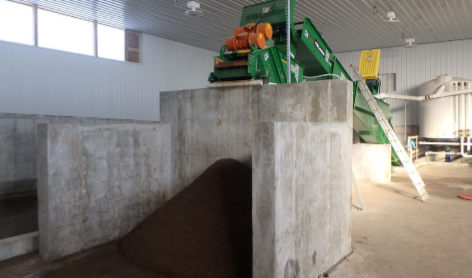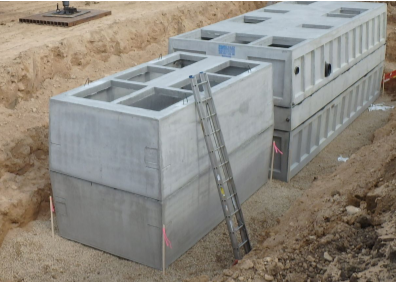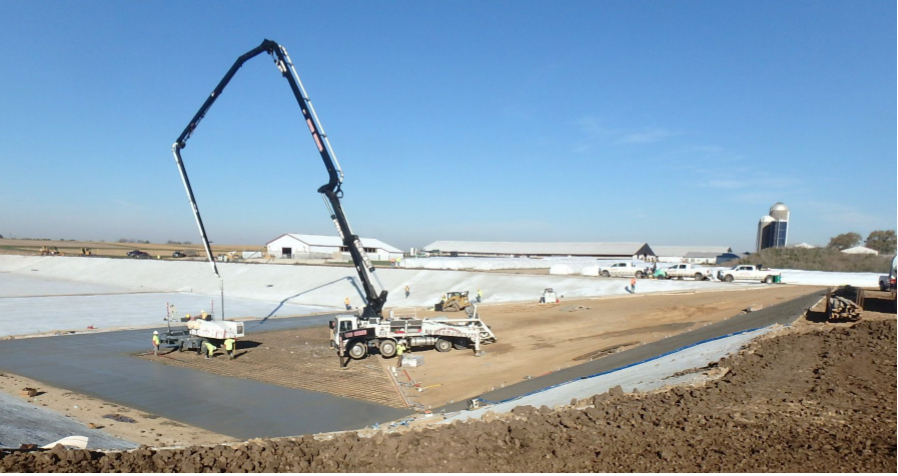The Emmons Blaine Dairy Cattle Research Center in Arlington, Wisconsin, is home to approximately 500 milking cows, 100 dry cows and over 50 calves. The dairy is part of the broader Arlington Agricultural Research Station (ARS) program that supports research, education and outreach through the College of Agricultural and Life Sciences at the University of Wisconsin-Madison.

Cleaned sand from the sand separation building
Blaine Dairy was looking for a partner and agricultural consultant to assist with a new manure handling system and upgrades to their sand separation system. MSA was selected to work with the dairy on these important projects because of its history of working with other ARS companion farms over the years.
The first component of the Blaine Dairy project involved a facility evaluation and feasibility study to assess needs and Wisconsin Pollutant Discharge Elimination System (WPDES) permit compliance for the dairy. The dairy’s existing system included a single sand settling lane and a two-stage lagoon. The sand settling lane was too small for the dairy and was not able to settle out the majority of the sand within the manure flow. This bypass of sand decreased the operational efficiency of stage one of the storage lagoon pushing sand into stage two. The stage two lagoon was clay lined, and therefore was hard to remove sand without damaging the liner; it was also exhibiting erosion and signs of deterioration.
MSA agricultural engineers proposed construction of a new, watertight concrete manure lagoon to replace the deficient system. Concrete slopes ensured that the liner will not erode due to precipitation and the larger lagoon allows the farm greater than one year of manure storage—a huge capacity improvement over the prior system. It also includes a large access ramp into the pit for cleaning, a maintenance convenience the prior system was lacking.

New manure flush lift station tanks
The second part of the project included upgrades to the dairy’s sand separation process. Blaine Dairy uses sand bedding in their freestall barn because it is the “gold standard” when it comes to comfort for the cows. While effective in theory, this sand settling lane proved largely ineffective in the winter months and also required a relatively lengthy waiting time due to the amount of water and organics in the sand needing to be stacked and stored before reuse. This resulted in space-consuming sand stockpiles and inefficient use of time. The dairy decided it was in their best interest to pursue the construction of an upgrade or different sand separation system.
As with any farm, operations cannot simply stop during construction. MSA staged efforts so that the lagoon and sand separation building were built concurrently, allowing Blaine Dairy to maintain daily operations and smoothly transition the new systems into use.
Upgrades at Blaine Dairy have provided the farm operational cost savings since being implemented. The project was designed and constructed in accordance with Natural Resource Conservation Service (NRCS) conservation standards, Wisconsin Department of Natural Resources (DNR), Wisconsin Department of Safety and Professional Services (DSPS), and local regulations. It is one of a number of successful project partnerships in conjunction with the University of Wisconsin system.

Construction of the new, watertight concrete manure lagoon
